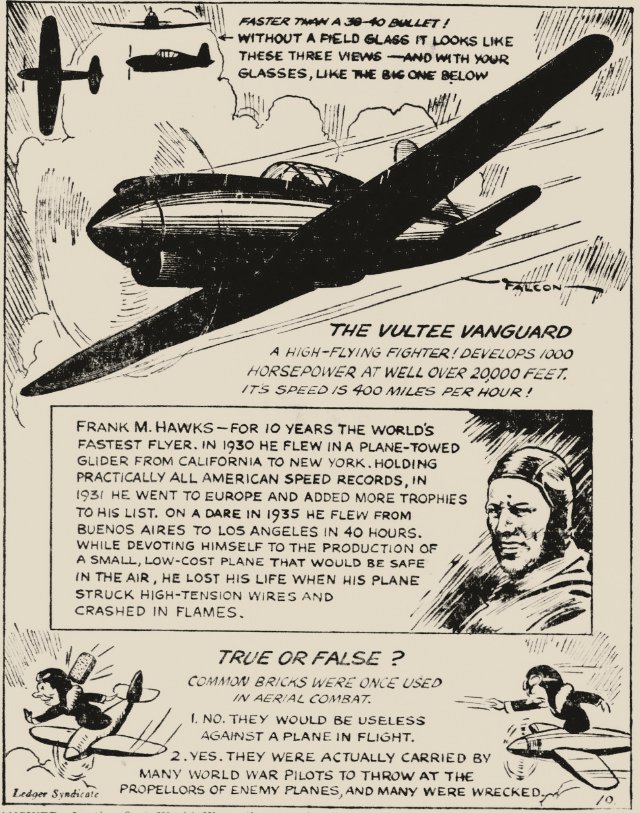SPOT YOUR PLANE — the Vultee Vanguard
Never heard of the Vultee Vanguard? Me neither.

Back in the 1930s, Vultee Aircraft thought of making an airframe that could perform multiple roles: a fighter as well as basic, advanced, and flight training. It does make sense, especially during the Great Depression. Sweden ordered over 100 of the aircraft in 1940, but the British ended up with the aircraft. The Royal Air Force wasn’t happy with the Vanguard and they ultimately ended up in China, where they were no match for the Japanese.
Flying one aircraft throughout training sounds like a good idea, especially in the cash-strapped 1930s and when biplanes were still a common sight. But by 1941, technology was starting to advance at ludicrous speed. It wasn’t uncommon for an aircraft to be outdated by the time it became operational. And the difference in speed and skill level required between a basic trainer and a top-of-the-line 1940s fighter was too large to be bridged by a one-size-fits-all platform from the previous decade. If Vultee’s plan was in fact a good idea, the Army Air Force wouldn’t have used multiple trainers and other developers would have jumped on the idea.
True of False?
Early pilots did in fact carry bricks, grenades, or even rope to knock their counterpart’s machine out of the sky. Usually enemy pilots just exchanged waves during the earliest days of military aviation, but the first recorded use of a gun was when a Serbian pilot fired his revolver at an Austro-Hungarian plane in August 1914.
Click here for another SPOT YOUR PLANE post on the Vanguard.